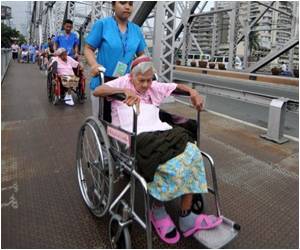The number of disabiled children has increased now as compared to the last decade, with a great increase in higher-income families.

"Nearly 6 million kids had a disability in 2009-2010 — almost 1 million more than in 2001-2002," said lead author Amy J. Houtrow, MD, PhD, MPH, chief, Division of Pediatric Rehabilitation Medicine at Children's Hospital of Pittsburgh of University of Pittsburgh Medical Center and associate professor of physical medicine and rehabilitation and pediatrics at University of Pittsburgh School of Medicine.
Dr. Houtrow said previous studies have indicated that the prevalence of childhood disability is increasing. She and her colleagues wanted to look more closely at the conditions and socio-demographic factors associated with disabilities.
The researchers analyzed data from the National Health Interview Survey conducted by the Centers for Disease Control and Prevention in 2001-2002 and survey data from 2009-2010. A total of 102,468 parents of children ages 0-17 years participated in the surveys.
Parents were asked whether their child had any limitations in play or activity, received special education services, needed help with personal care, had difficulty walking without equipment, had difficulty with memory or had any other limitation.
If they answered yes to any of those questions, they were asked whether their child's limitations were due to a vision or hearing problem; asthma or breathing problem; joint, bone or muscle problem; intellectual deficit or mental retardation; emotional or behavior problems; epilepsy; learning disability; speech problems; attention-deficit/hyperactivity disorder; birth defect; injury or other developmental problem.
Advertisement
Results showed that the prevalence of disability increased 16.3 percent from 2001-2002 to 2009-2010.
Advertisement
"The survey did not break out autism, but we suspect that some of the increase in neurodevelopmental disabilities is due to the rising incidence or recognition of autism spectrum disorders," Dr. Houtrow said.
The data also showed that children living in poverty experienced the highest rates of disability at both time periods but not the highest growth. The largest increase was seen among children living in households with incomes at or above 300 percent of the federal poverty level (about $66,000 a year for a family of four).
"We are worried that those living in poverty may be having problems with being diagnosed and getting services," Dr. Houtrow said.
Since the study could not pinpoint why the disability rate is increasing, more research is needed, she concluded.
Source-Eurekalert









